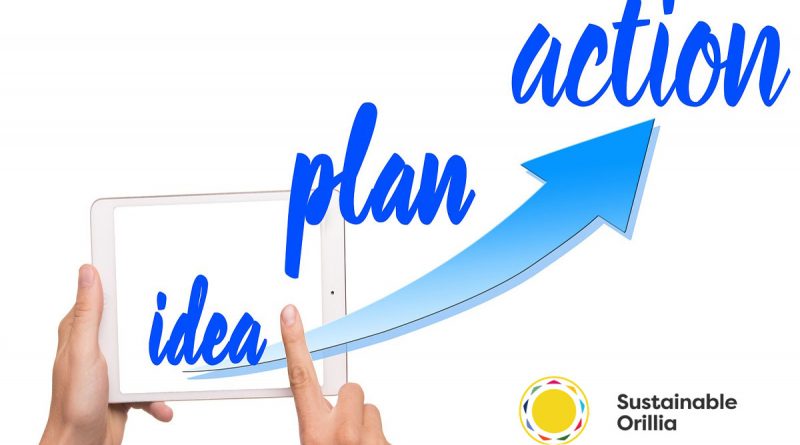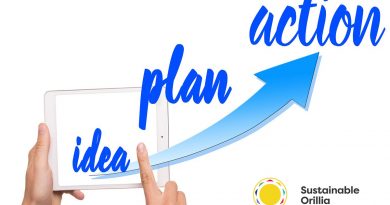Sustainable Orillia’s Tip Of The Week

Newest tips on top, check in every Saturday morning for new tips. If you have an idea to reduce waste, treat the environment better, or reduce carbon footprint that works, send it to Info@sustainableorillia.ca with the subject line: I've Got A Tip.
IDLE NO MORE
Canadian winters are legendary. Frigid mornings feature the collective groans of Canadians and their cars as they get their January days underway. But those groans are becoming fewer as technological improvements make newer vehicles more and more ready to roll even on the most brutal mornings. According to Car Help Canada, most recent models need less than thirty seconds to warm up and will do so more efficiently when in motion. Warming up the car is simply no longer a necessity.
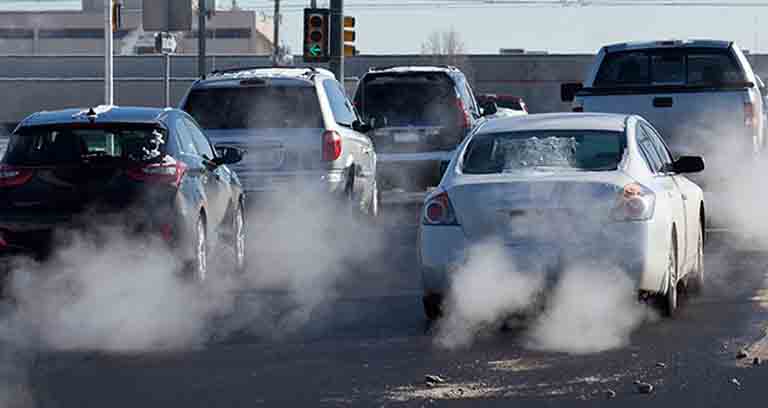
Idling our vehicles less will save money on fuel, improve air quality in our community, and reduce emissions contributing to climate change.
We know asking readers to eliminate vehicle idling in the midst of winter is a big ask– but why not limit your vehicle idling? Consciously cutting it in half or reducing it by ten minutes a day? Or maybe eliminating it entirely? Let’s take a look at a couple of the reasons why these actions make a difference.
It’s calculated over 10 billion gallons of gasoline are wasted each year world-wide from vehicle idling. Idling vehicles for ten seconds or more uses more fuel than restarting the engine, a main reason many new vehicle models are equipped with an automatic engine stop-and-start feature, reducing emissions at every red light or traffic back-up. Reducing our personal vehicle idling by just ten minutes each day translates into an additional eight or more kilometers of travel, saving both gas and money.
Vehicle emissions are the largest contributor of greenhouse gases (GHG) world-wide. Idling a vehicle for just 10 minutes generates the equivalent of a pound of GHGs. When we multiply that by the number of vehicles we see idling everyday, it’s clear that reducing vehicle-idling is a positive step to reduce GHG emissions.
It’s not just the health of our planet that is negatively affected by exhaust fumes. Our health is affected too. Many studies identify the negative effects of exhaust fumes on our health – in particular, our brain cells. School boards have become leaders in restricting vehicle idling in school zones to protect the health of their students.
Another sure-fire way to reduce vehicle idling is to avoid or reduce our use of drive-thrus. Drive-thrus are a concentrated source of vehicle-idling – so much an increasing number of North American cities have taken steps to curtail development of additional drive-thru operations. And consider the additional health benefit of parking, getting out of your car, and walking to and from the coffee counter. Exercise, people, exercise.
Small, individual steps matter. Doing our personal best to preserve our planet and quality of life is the only way we can make a difference and provide role models for our families and friends. Reducing our vehicle idling is one of these small steps.
STAY COZY AT HOME
According to the World Wildlife Federation, if every Canadian turned their thermostat down 2 degrees and put on a sweater while in the house, we could save 4 megatons of greenhouse gas emissions.

Why not borrow the idea of hygge from the Danes?. It refers to a form of everyday togetherness, a pleasant and highly valued everyday experience of safety, personal wholeness and happiness. The word includes something nice, cozy, safe and known. – a warm blanket, a favorite sweater, candles burning nearby, a hot cup of tea, a good book, a cat on your lap or a dog curled up at your feet, and above all, the opportunity to relax in a comfy chair and know that you feel really, really good at this very moment.
While we’re talking about cozy, comfy sweaters, in case you are on the hunt for just the right one, buying second hand is a great option. The fashion industry involves a lot of environmental degradation – from harvesting the textiles and dyeing the fabrics to shipping the products. In the end, many pieces of clothing end up in the landfill after they have been worn for only a couple of years. Each year, over 1.2 million tonnes of textile waste is dumped into the North American landfills.
Once you’ve got that oh, so comfy sweater, consider creating hygge in your favorite room at home. Another tip: hygge is even better with the person you love or a good friend there enjoying the coziness with you.
Tip by: Couchiching Conservancy’s fall 2019 newsletter
BLUE BOX ETIQUETTE PART 2
At a recent Sustainable Orillia public event (Waste Management – November 28) Greg Preston, the City of Orillia’s manager of such things, provided more tips to help make blue boxes work the way they’re supposed to.
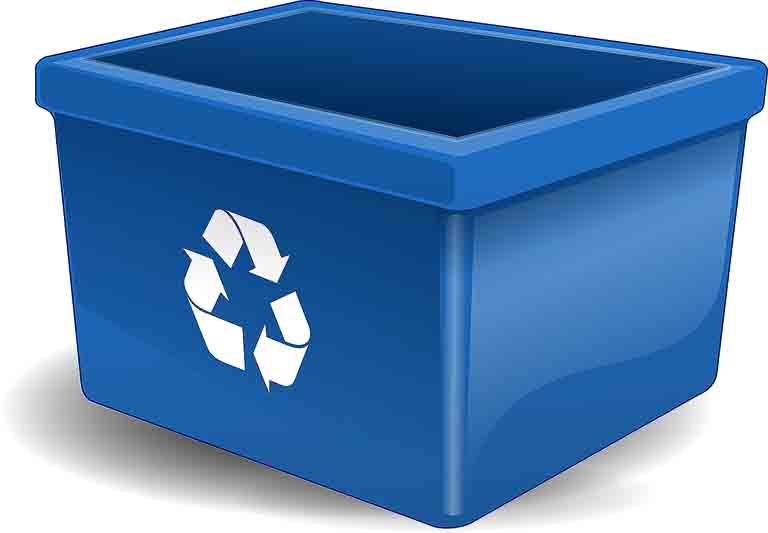
- Wrapping paper with sparkly stuff on it cannot be recycled. Best choice? Wrap your presents in paper that can be recycled – or in that bath towel you’re also giving.
- Use one bin for paper and another for containers. Don’t mix items.
- Plastic film is collected by the city – milk bags, bread bags, store bags (cereal liners not included). They must be clean. Then fold it all and place in a clear plastic bag. When the bag is full put it out separate from the rest of your recycling.
- Styrofoam is also collected by the city. Put it into a separate bag and include it in the blue box for paper, not the one for containers.
- Aluminum foil is recyclable – but must be clean.
- Put caps back on pop 2-liter plastic bottles, same with milk cartons – doing so ensures they go to the recycler.
- Paper cups, including McD’s and Tim Horton’s, go into the paper bin; lids go into the garbage
- If you have a contaminated pizza box don’t put it in your blue box. Rip it up and put it in the compost instead.
- Elastic bands? Clips on bread? Into the garbage, please.
- Finally, no propane cannisters. Those are a dangerous hazard.
RECYCLING – BUY USED CLOTHES
The old idea of thrift stores as places with racks of old and tattered clothing is outdated and changing. Climate concerns are driving a boom in a newly energized resale industry, forecast to quadruple in size very soon.
The fashion industry has been criticized for its effect on the environment. Much of fast fashion piles up in landfills, and some have estimated its carbon footprint as larger than that of the shipping and airline industries combined. Buying used clothing helps alleviate these problems, and it appears consumer attitudes are changing.
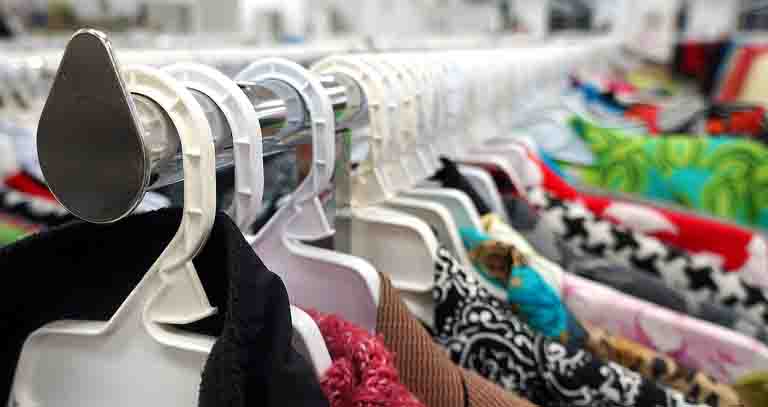
Some fast fashion chains are closing stores due to flagging sales. Retail consultant Bruce Winder said fast fashion’s target market – young, style-conscious shoppers on a budget – are also those most concerned about the health of the planet.
“All the fast fashions these days are just polluting our Earth, so it’s nice to be able to reuse other things that people don’t want,” said one young customer browsing through the coat department recently at a Value Village thrift store. Zero-waste consultant Sophi Robertson says her closet has only one piece of clothing that was bought new, everything else is second-hand.
For some who grew up associating second-hand clothing with being poor, there’s a stigma around second-hand items. But that’s changing quickly. Some give the credit to our children, they are learning about environment issues at school and are taking environmental responsibility seriously. Let’s join them.
SAY NO TO SINGLE USE PLASTIC BOTTLES
Last week, Coca-Cola was named the most polluting brand in the world. Close behind were Nestle and PepsiCo. It’s no surprise, though – Coca-Cola itself recently disclosed that it produces three million tonnes of plastic annually.

Plastic is found everywhere, but one of the most common applications is packaging for drinks, including water. Studies show only 9% of all plastic waste is ever recycled.
The good news is Coca-Cola and other soft drink makers have signed on to a partnership which advocates for a circular economy where nothing is wasted.
In some places, retailers use a system where consumers pay an indirect deposit (i.e. fee built into the price) when buying a drink and upon returning the bottle get a discount on their next purchase. The bottle is cleaned and reused. The program has seen a return rate of over 90%.
The fight against plastic bottle waste is winnable. If you haven’t yet joined the fight, why not start this week by refusing to buy water packaged in single-use plastic – and by promising yourself to never again purchase this product?
TRAVEL TIPS FOR SNOWBIRDS
It’s the time of year when many Canadians are lucky enough to escape some or all of winter by packing their bags and heading south to warmer climes. As some of us cast our thoughts to sunnier days and balmier nights, here are a few reminders from Sustainable Orillia to help us travel light and right.

- Reduce paper. Use your phones to download boarding passes and tickets.
- No matter whether you are flying or driving, if you haven’t already invested in a set of refillable plastic containers, then please do so.
- Most airports and rest-stops along the way have recycling bins for plastics, paper products and so on; take an extra moment to sort your garbage. Be sure to follow the local guidelines.
- Consider buying carbon offsets. Most airlines offer carbon offsets. For a small fee you can help neutralize your personal travel carbon footprint.
- If you’re flying bring your own headphones and reject the plastic-wrapped set.
- Be mindful, it’s easy to lose track of things when we’re on the road. Keep personal things together and organized, especially those items that contain plastic. The better care we take, the less likely something will get lost and need to be replaced… which ultimately means less plastic or waste that ends up in landfills or the sea.
Little things, by lots of people, make a big difference. These are just a few thoughts on how we can integrate sustainable behaviors in all parts of our lives no matter where we spend our winters. If you have any ideas on sustainability you would like to share, please let us know and in the meantime – travel safe and travel right.
THE LAST STRAW
Did you know that Canadians throw out 57 million plastic single-use straws everyday? Do you know where they end up? In landfills–and even worse, in our waterways and oceans where they take over 300 years to break down and doing irreparable damage to the well-being of our planet and of the folks and fish who live on it.
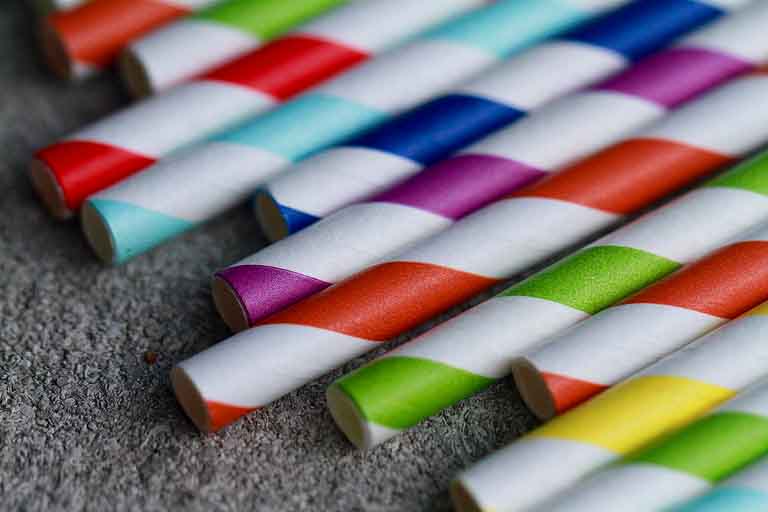
Let’s do something about this. Whether at home, in the grocery store, or at a restaurant or bar – say a big no to plastic straws.
Choose paper straws. Better, choose straws made of reusable, long-lasting materials like stainless steel, glass or bamboo–all of which are available on-line or through local outlets such as Home Hardware, The Dollar Store and Giant Tiger.
Make your last plastic, single-use straw truly Your Last Straw.C
ARE YOU A BLUE BOX BUSTER?
Orillians have a wonderful record of blue box usage and we can be rightfully proud of the attempts we have made over past years to reduce waste going to our landfill.
But sometimes the items we intend to recycle end up going to the dump. Why? Some reasons follow:

- If you neglected to wash and rinse food particles out of the container it goes to the dump.
2. If you’ve ignored the greasy stain on the cardboard pizza box It goes to the dump.
3. If you’ve misread the symbol on the product )the symbol with the 3 arrows means the package was made from recycled content) It may not be recyclable at all, and yes, off to the dump it goes.
All of us need to know the local rules for Blue Box recycling—and follow them closely. Otherwise, a lot of our efforts are for nothing.
NATURAL CLEANERS DO THE JOB
Vinegar, lemon, hydrogen peroxide, and baking soda, you probably already have these in your kitchen or bathroom. Did you know they can also be used to clean your house more cheaply and often more effectively than commercial cleaning products?
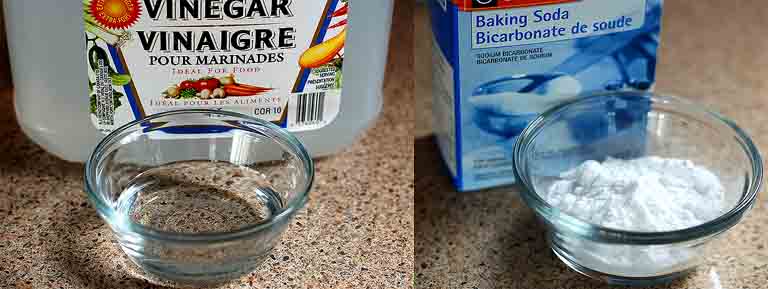
The April/May edition of Chatelaine magazine provides a detailed look at how these products can be used to cut grease, deodorize, disinfect, lift dirt and even whiten.
In addition, going online with a search for “cleaning with natural products” also turns up recipes for everything from a room deodorizer to how to clean the grease from your BBQ.
Like other planet-saving actions, these will also save you money and are better for your health.
SCARY HALLOWEEN TREATS
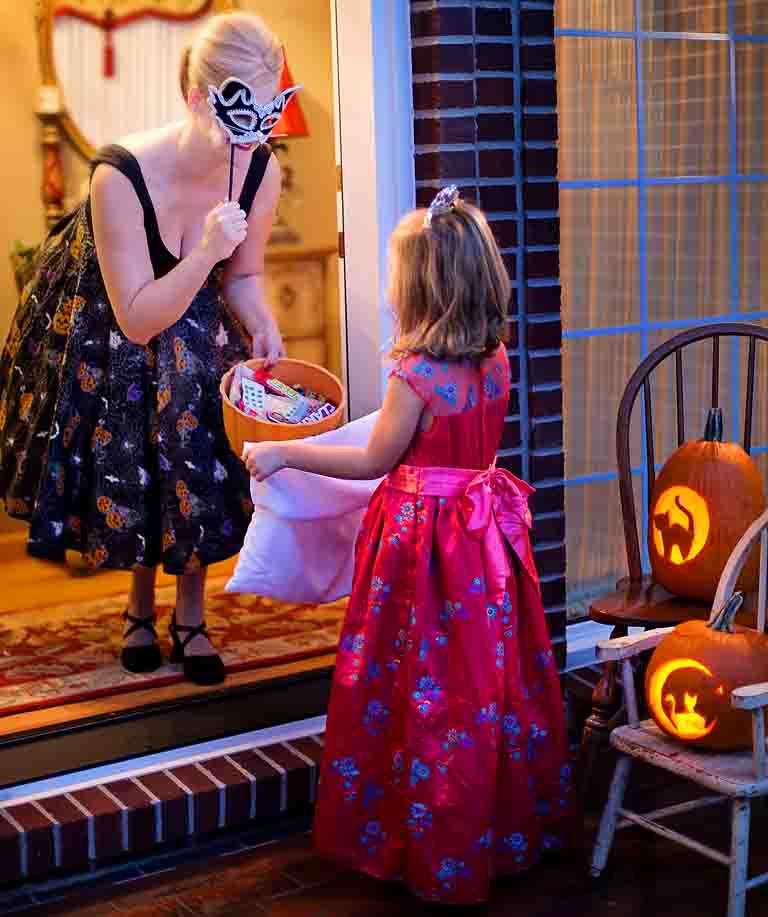
We know that Halloween treats are not always good for kids’ dental health. They can also be scary from an environmental perspective: Many contain palm oil, which may be produced in a way that causes deforestation and horrifying outcomes for endangered rainforest animals.
The Toronto Zoo has launched a campaign asking people to choose treats that protect rainforests, listing brands that use certified sustainable palm oil:
- Mars (Twix, 3 Musketeers, M&Ms, Snickers, Dove, Skittles)
- Hershey’s (Reese’s, Turtles, Whoppers, Twizzlers, Jolly Ranchers)
- Frito-Lay (Lay’s, Ruffles, SunChips, Tostitos, Cheetos)
- Quaker
- Ferrero
- Kraft Heinz
- Lindt & Sprungli
According to the World Wildlife Fund, many consumer products contain palm oil, from lipstick to soap to ice cream. Consumers can help by choosing products carefully.
WHERE’S THE BEEF?
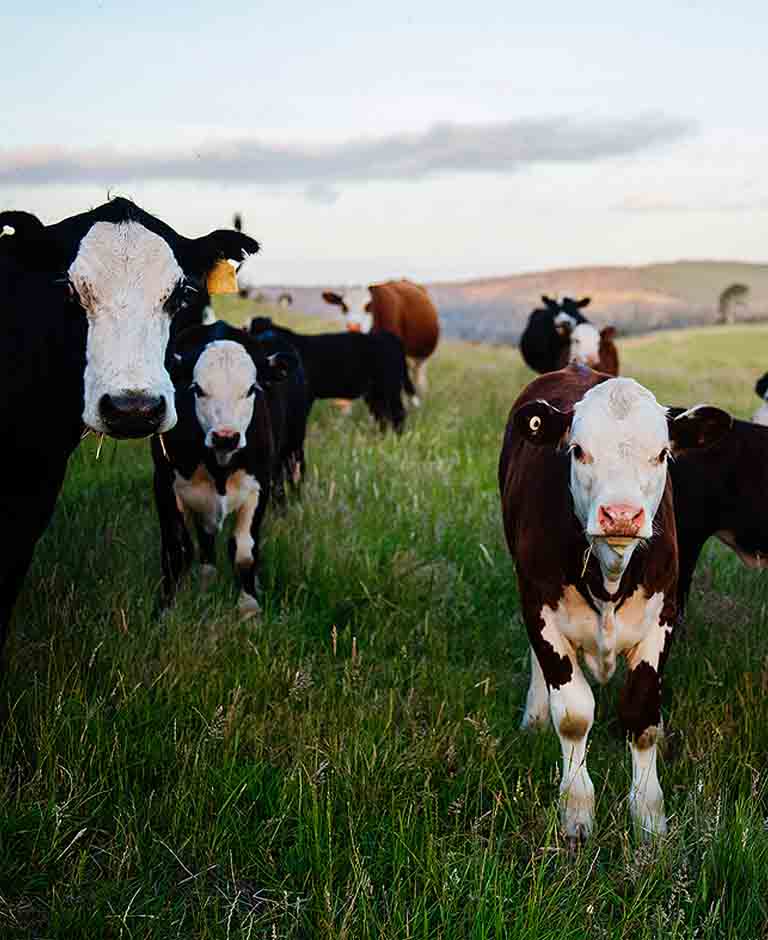
Who knew that eating meatloaf, hamburgers, and steaks was bad for future generations? Twenty years ago no one, that’s who. But now we know raising millions of cattle to produce beef is one of the primary sources of greenhouse gases (GHGs).
So changing our diets becomes one way we can make our way of life more sustainable. Face it, it also shrinks our food bill, making our weekly or monthly income also more sustainable.
Work at this. Substitute other meats for beef (see the Glory Bowl recipe online). Better? Plan a couple of meatless meals each week.
WINTERIZING YOUR GARDEN
There’s nothing like a beautiful fall day as red and yellow leaves fall gently onto our lawns and gardens. Gardeners, by nature, are long-term planners and although those falling leaves tell us that its time to prepare our flower and vegetable beds for winter’s blast, our thoughts are always focused on the season ahead.
Increasingly our thoughts are on how best to integrate sustainable practices into our gardening regimes. The mantra of Reuse, Recycle and Repurpose applies as much to gardening as it does to other parts of our lives.
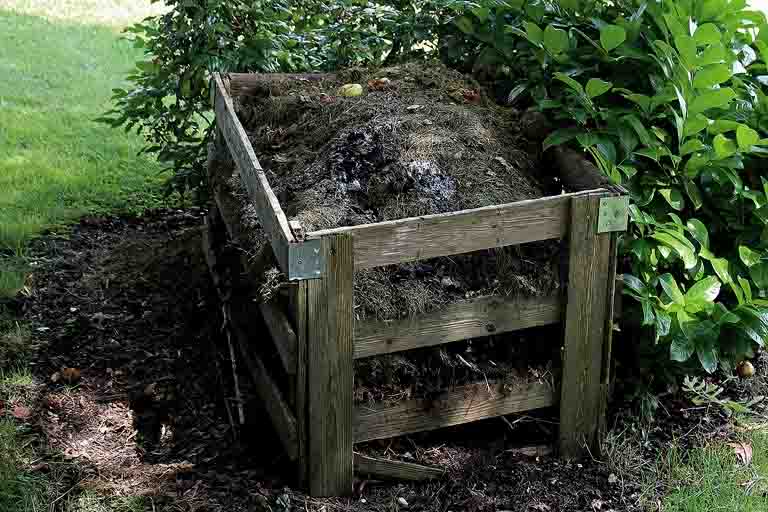
For example, as you prune or pull out your plants, chop them up and compost them for next year’s beds. If you don’t already have a composting system in your garden, start small in a corner of your garden with a simple pile of the chopped-up plants, cover with dirt and let nature take its course. You’ll be able to add this organic matter directly to your garden’s beds next season.
Do you have a stack of used plastic plant containers in your shed? This is a good time to take them back to your local nursery where they can be repurposed for next year’s plantings.
What about water? It’s never too late to find a way to capture rain water for the garden. Just remember to empty your container before it freezes. A good rain barrel not only reduces wasted water, it also adds character to the garden.
Winter is when most gardeners plan (and dream). This winter gardeners are encouraged to learn more about how they can integrate sustainable practices into those gardening plans. There is lots of helpful information on-line, and we here at Sustainable Orillia will be posting ongoing tips throughout the seasons to help build better gardens naturally. Meanwhile, enjoy autumn’s glow as you wind down another season and prepare for the next.
DO YOU REALLY NEED A CLOTHES DRYER?
Automatic clothes dryers account for a lot of electricity use in an average household – more than your clothes washer, fridge and TV combined.
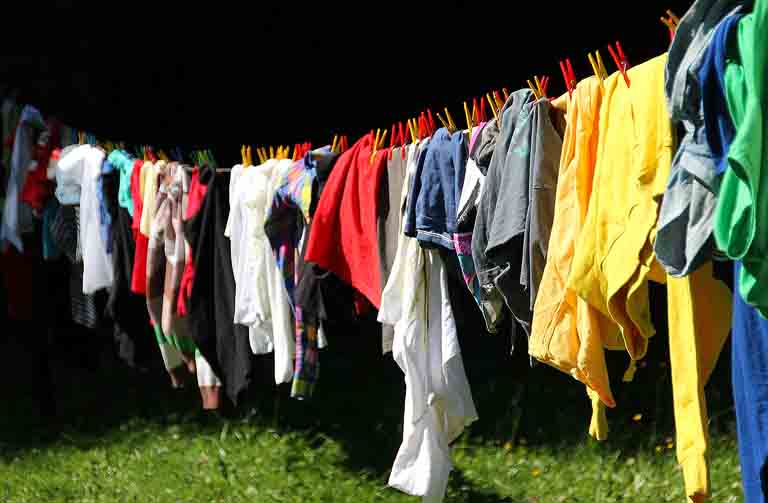
Clothesline drying is one of the easiest ways to save energy—and your money. You save 100% of the cost simply by hanging your clothes up to dry.
Clothesline drying is a simple task from a simpler time. Drying outside, if possible, is best, since clothes dry faster and the sun has a sanitizing effect. Indoor drying, especially in winter, adds welcome humidity to your home.
Get a clothes rack at your local hardware store for $25. Thanks for the tip Tony Telford.
GOT A DITCH? THINK BIOSWALE!
You can help the environment and beautify your home by planting a bioswale. A bioswale is typically a vegetated channel that carries storm-water runoff from streets, parking lots and roofs. The effect is to filter and slow down runoff water while making it cleaner and safer for the environment, allowing it to sink into the ground rather than run into streams and lakes.
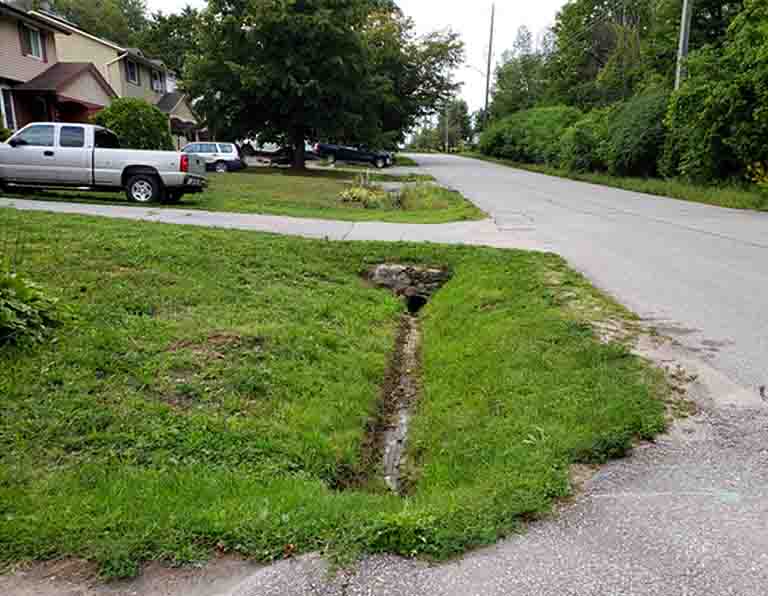
Some storm-water management practices, such as storm sewers and concrete channels, may be effective in handling runoff, but they’re ultimately eyesores. Bioswales offer a more pleasing alternative. They add aesthetic appeal to a residential or commercial site with texture, colour and habitat for birds and butterflies.
During seasonal shifts, city sewer and storm-water systems can struggle to keep up with increased water runoff. A 4 meter bioswale can absorb about a quarter of the total rainfall runoff that it receives.
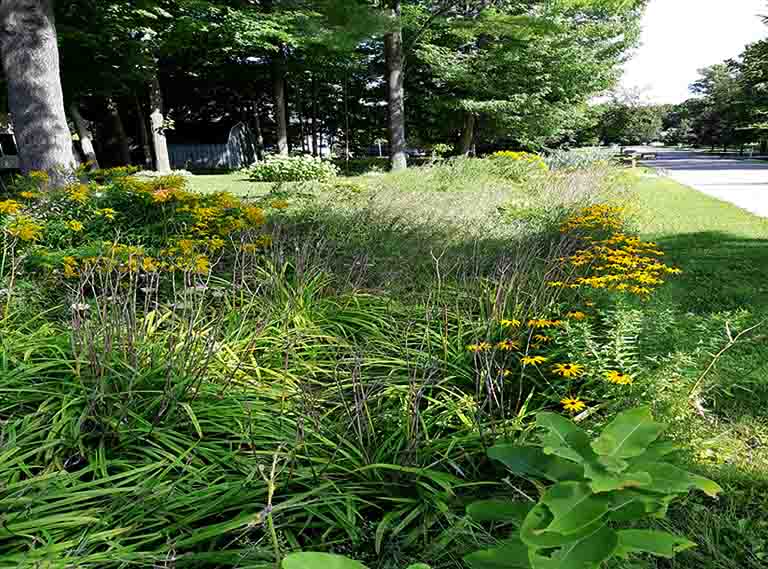
Once established, a bioswale needs little maintenance. They are vegetated with hardy native plants with established root systems which can withstand drought and a heavy downpour. While they are most effective in dealing with frequent, small rainfalls, they are also important in areas susceptible to storms. Liven up your landscape with a bioswale You’ll not only protect our lakes and reduce the load on our city infrastructure, you’ll also beautify your home. Thanks for the tip Dorthea and Jane
ATTRACT POLLINATORS TO YOUR GARDEN
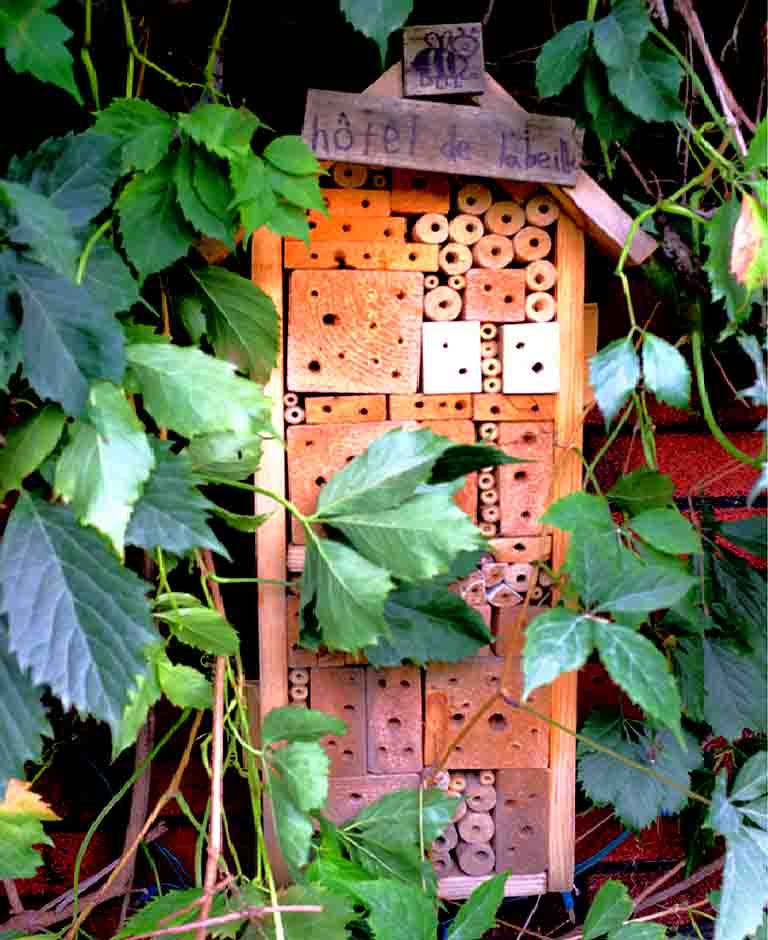
Birds, bats, bees, butterflies and beetles pollinate plants and are responsible for bringing us one out of every three bites of food. Worldwide, over half the diet of fats and oils comes from crops pollinated by these little critters. They transfer pollen grains from one flower to another, and facilitate the reproduction in 90% of the world’s flowering plants.
Pollination leads to the production of fruits we eat, and the seeds that will create more plants. Pollination begins with flowers. Gardeners can support pollinators by providing pesticide-free food sources, safe shelter, and access to clean water. Having variety in your plants and their bloom times will help attract and support pollinators. Consider planting a portion of your lawn with native wildflowers to act as a pollinator garden (you’ll save time and lawnmower gas). Butterflies such as the monarch are an important model species for ecologists when determining the health of an eco-system. Many gardeners plant milkweed in their eco-friendly gardens to attract monarchs by providing a source of food for monarch caterpillars. Another way to ensure local bees set up shop in your yard is to install a bee house or bug hotel.
JUMP ON THE BUS, GUS
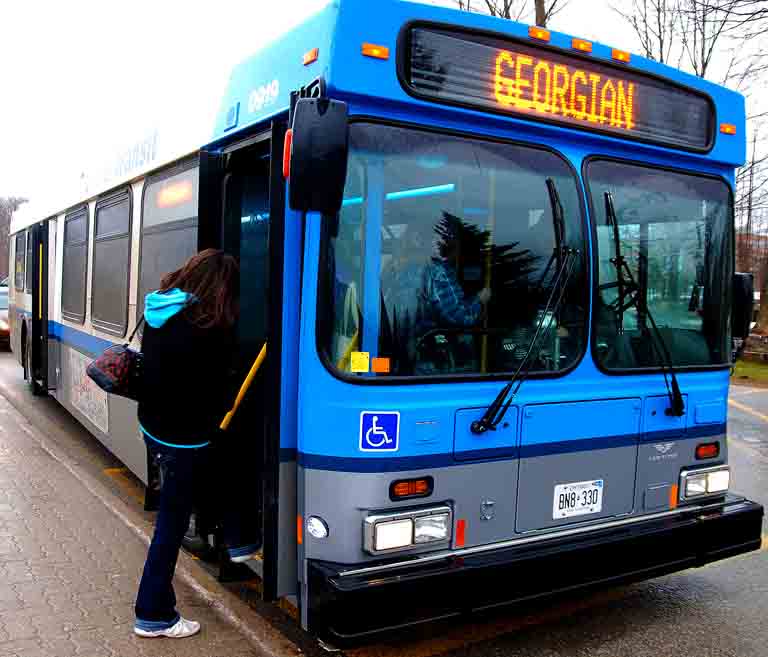
Take Orillia Transit or plan to carpool at least a couple of days a week. If possible ride your bicycle to work. Walk, even. Get some exercise—your body will thank you.
Driving to Toronto often? Take the GO bus or the GO train from Barrie instead. The new LINX bus will take you to Barrie for $4. It goes every 50 minutes between 6 am and 6 pm.
Learn how to connect with Toronto subways and buses. Leave the driving to someone else. The average family spends 20% of their family income on transportation. This means that reducing use of our cars can save us thousands of dollars each year.
Transportation is the source of 25% of our carbon emissions in Canada. So we’re saving money, but we’re also saving the planet. Let’s do it.C

